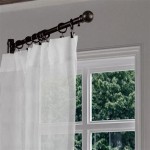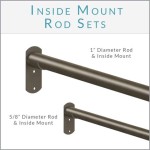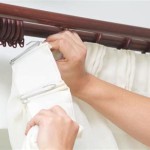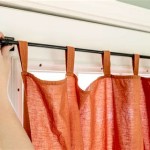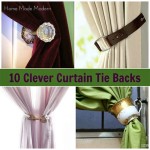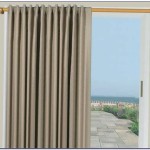Energy Efficient Curtains for Winter: A Comprehensive Guide
During the winter months, maintaining a comfortable indoor temperature often leads to increased energy consumption, subsequently increasing heating bills. A significant portion of heat loss from a home occurs through windows. Energy-efficient curtains represent a practical and cost-effective solution to mitigate this heat loss, contributing to a more comfortable and energy-conscious living environment.
This article provides a comprehensive overview of energy-efficient curtains, exploring their functionality, types, selection criteria, and installation considerations. The discussion aims to equip individuals with the necessary knowledge to make informed decisions regarding the integration of energy-efficient curtains into their homes.
Understanding the Principles of Energy Efficiency in Curtains
The primary function of energy-efficient curtains is to minimize heat transfer between the interior of a building and the external environment. This is achieved through several mechanisms. Firstly, the curtain fabric acts as a barrier, reducing conductive heat transfer. The thicker the fabric and the tighter its weave, the more effective it will be in impeding the passage of heat. Secondly, some energy-efficient curtains incorporate a thermal lining that reflects radiant heat back into the room, further enhancing their insulating capabilities. Finally, by creating a static layer of air between the curtain and the window, convective heat loss is also reduced. The curtains essentially trap a pocket of air, which then acts as an insulator.
The effectiveness of energy-efficient curtains is influenced by several factors, including the type of fabric, the presence of a thermal lining, the color of the fabric, and the fit of the curtain. Darker colored curtains tend to absorb more solar radiation, which can be beneficial during sunny winter days but potentially detrimental during summer months. A tight fit, extending beyond the window frame and reaching the floor, minimizes air leakage and maximizes insulation.
The R-value is a critical measure of thermal resistance. While curtains are not typically assigned R-values in the same manner as insulation materials, the concept is still relevant. A higher R-value indicates a greater resistance to heat flow. Thicker fabrics and multiple layers contribute to a higher effective R-value for the curtain assembly. Choosing curtains with a dense weave and a substantial weight per square meter is a good indicator of improved thermal performance.
Types of Energy-Efficient Curtains
A variety of energy-efficient curtains are available, each with its specific characteristics and advantages. Understanding these different types is essential for selecting the most suitable option for a particular application.
Thermal Curtains: These curtains are specifically designed to provide thermal insulation. They typically feature multiple layers of fabric, including a thermal lining that acts as a barrier to heat transfer. The lining is often made of acrylic suede, foam-backing, or multiple layers of tightly woven fabric. Thermal curtains are particularly effective at blocking drafts and reducing heat loss. Their thicker construction also provides enhanced sound dampening, which can be beneficial in noisy environments.
Blackout Curtains: While primarily designed to block light, blackout curtains also offer significant energy-saving benefits. Their dense weave and often multiple layers effectively prevent heat transfer. Blackout curtains are particularly useful in bedrooms or media rooms where light control is desired in addition to energy efficiency. The term "blackout" refers to their ability to block nearly all light, but their thermal performance should also be considered when making a purchase.
Insulated Curtains: Insulated curtains are similar to thermal curtains, but they often incorporate additional features to enhance their insulating properties. This may include multiple layers of different materials, such as a vapor barrier to prevent moisture condensation and a reflective layer to bounce radiant heat. Insulated curtains are often heavier and more expensive than standard thermal curtains, but they offer superior energy savings.
Cellular Shades (Honeycomb Shades): Although technically shades, cellular shades are frequently considered alongside curtains for their energy efficiency. They feature a honeycomb-like structure that traps air within the cells, creating a highly effective insulating barrier. Cellular shades offer a clean and modern aesthetic and can be particularly effective in smaller windows or in rooms where light control is not a primary concern.
Roman Shades with Thermal Lining: Roman shades offer a more decorative alternative to standard curtains, but they can be made energy-efficient by adding a thermal lining. The lining provides the necessary insulation, while the Roman shade style provides a more tailored and sophisticated look. This option allows for a balance between aesthetics and energy performance.
Key Considerations for Selecting Energy-Efficient Curtains
Choosing the right energy-efficient curtains involves careful consideration of several factors. The following criteria can help guide the selection process:
Fabric Type and Weight: The fabric type is a primary determinant of the curtain's thermal performance. Dense, tightly woven fabrics such as wool, velvet, and denim offer greater insulation than lighter, more loosely woven fabrics. The weight of the fabric is also a good indicator of its insulating capabilities. Heavier fabrics generally provide better thermal resistance.
Thermal Lining: The presence of a thermal lining is crucial for maximizing the energy efficiency of curtains. Look for linings made of acrylic suede, foam-backing, or multiple layers of tightly woven fabric. The lining should be securely attached to the main curtain fabric to prevent air gaps. The color of the lining can also impact performance; a light-colored lining will reflect more heat back into the room.
Color: The color of the curtain fabric affects its ability to absorb and reflect solar radiation. Darker colors absorb more heat, which can be beneficial during sunny winter days. However, during summer months, dark-colored curtains can contribute to overheating. Lighter colors reflect more heat, which can help keep rooms cooler in the summer. Consider the orientation of the windows and the climate when selecting the color.
Fit and Coverage: The way the curtains are hung and how well they fit the window significantly impacts their energy efficiency. Curtains should extend beyond the window frame on all sides to minimize air leakage. Ideally, the curtains should reach the floor, creating a seal at the bottom to prevent drafts. Overlapping multiple panels of curtains can further enhance insulation.
Header Style: The header style of the curtain also influences its energy efficiency. Grommet-top curtains, while aesthetically pleasing, tend to allow more air leakage than other styles. Pleated or rod pocket curtains provide a tighter seal and reduce drafts. Consider the functionality and aesthetics of different header styles when making a selection.
Maintenance: The ease of cleaning and maintenance is another important consideration. Curtains that require frequent and specialized cleaning may not be practical for everyday use. Look for fabrics that are durable, stain-resistant, and easy to wash or dry clean.
Installation and Usage for Optimal Performance
Proper installation and usage are crucial for maximizing the energy-saving benefits of curtains. Improper installation can negate the effectiveness of even the most energy-efficient curtains.
Rod Placement: The curtain rod should be installed as close to the ceiling as possible to minimize air leakage at the top of the window. The rod should also extend beyond the window frame on both sides to allow the curtains to fully cover the window when closed.
Sealing Gaps: Use caulk or weather stripping to seal any gaps around the window frame to prevent drafts. This will further enhance the insulating capabilities of the curtains. Addressing air leaks is a fundamental step in improving overall energy efficiency.
Proper Length: The curtains should be long enough to reach the floor or extend beyond the window sill. This creates a seal at the bottom and prevents drafts. If the curtains are too short, they will not effectively block airflow.
Tucking Curtains: Tucking the curtains behind furniture or radiators can trap heat and reduce their effectiveness. Ensure that the curtains are free to hang properly and block airflow. Moving furniture away from windows can improve the performance of the curtains.
Seasonal Adjustments: During winter, keep the curtains closed during the day to retain heat. On sunny days, open the curtains on south-facing windows to allow sunlight to warm the room. During summer, keep the curtains closed during the day to block solar heat gain.
Layering Curtains: Layering curtains can further enhance their energy efficiency. Combine sheer curtains for daytime privacy with heavier thermal curtains for nighttime insulation. This provides flexibility and allows for adjustments based on weather conditions.
Cost Considerations and Return on Investment
Energy-efficient curtains represent an initial investment. However, the long-term energy savings can offset the purchase price and provide a significant return on investment. The cost of energy-efficient curtains varies depending on the type of fabric, the presence of a thermal lining, and the size of the window.
Consider the long-term benefits of reduced energy consumption when evaluating the cost of energy-efficient curtains. Over time, the savings on heating and cooling bills can more than compensate for the initial investment. Furthermore, energy-efficient curtains can improve the comfort of your home and reduce your carbon footprint.
Several factors influence the payback period for energy-efficient curtains, including the climate, the size and number of windows, and the cost of energy. In colder climates with high energy costs, the payback period will be shorter. A thorough cost-benefit analysis can help determine the potential savings and the return on investment.
Government incentives and rebates may be available for energy-efficient upgrades, including curtains. Check with local utility companies and government agencies to explore potential financial assistance programs. These incentives can further reduce the upfront cost and accelerate the return on investment.

Thermal Insulated Curtains For Winter Energy Efficiency Ing Guide Tellbest

Thermal Curtains From Second Hand Materials

Double Layer Winter Curtain Thermal Door Energy Saving Heavy Insulated Curtains For Cold Homes Etsy New Zealand

Stay Warm Save Energy With Insulating Curtains For Winter

Insulated Curtains Reduce Your Heating And Electric Costs With Energy Efficient Machine Washable Grommet Top

Insulated Curtains Stop Drafts Keep Out Cold Heat Reduce Heating And Electric Costs Energy Efficient Machine Washable Premium Tab Top

Double Layer Winter Curtain Curtains For Cold Homes 44 Colors Thermal Energy Saving Drapes Blackout Usa Etsy

The 7 Best Thermal Curtains In 2024 Curtain Reviews

Thermal Curtains Energy Efficiency And Temperature Control For Every Season Sa

Can Thermal Curtains Really Keep You Warm And Save Power Deconovo Us

